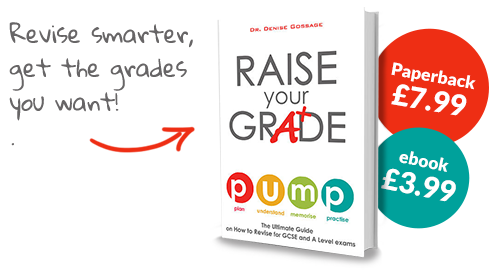Why You Need This Book
Introducing the PUMP Revision Approach
PUMP Phase 1: P is for Plan
- Step 1. Decide when to start
- Step 2. Get your revision resources together
- Step 3. Create Revision Topic Trackers
- Step 4: Decide how long and when you will study
- Step 5. Create an Exam Countdown Planner
- Step 6. Create a Weekly Revision timetable
- Step 7. Prepare your Revision Sanctuary
- The perfect Study Crib
- Sound or silence?
- Study buddies
PUMP Phase 2: U is for Understand
- Step 1. Get The Big Ideas in each topic:
- Understand the Exam Specification
- Understand your Class Notes and Textbooks
- Fill gaps in your Understanding
- Step 2. Create your first set of Revision Notes
- Choose a format for your Notes
- Plan how to structure your Notes
- Reorganise the material
PUMP Phase 3: M is for Memorise
- Step 1. Condense your Revision Notes into Revision Summaries
- Condensing
- Mnemonics
- Choosing the right format for your Revision Summaries
- Written formats
- Visual formats
- Q&A formats
- Audio formats
- Step 2. Review and Recall Sessions
- Active recall
- Space it out
PUMP Phase 4: P is for Practise
- Step 1. Get to grips with your Assessment Objectives
- Step 2. Get familiar with Command Words
- Step 3. Get the best out of past papers
- Simulate exam conditions
- Mark the paper harshly and address the gaps
- Understand the mark scheme
- Look out for buzzwords and key phrases
- Read the Examiners’ Report and Exemplar Materials
- Step 4. Master your exam technique
- Read through the whole paper
- Choose your questions carefully
- Plan your time
- Plan your answers
- Answer the question
Applying PUMP to different subjects
- One PUMP fits all
- Content-based subjects
- Skills-based subjects
Final thoughts


